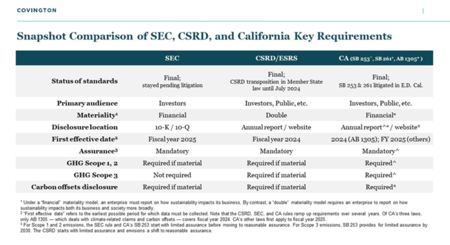
Bad cholesterol levels are dropping ‘spectacularly’ in Australia and other western nations but rising in low and middle-income countries, particularly in Asia, a major new global study reveals.
Led by London’s Imperial College, and published in Nature, the research used data from 102.6 million individuals and examined cholesterol levels in 200 countries, across a 39-year time period, from 1980 to 2018.
Flinders University Professor Robert Adams, one of several Australian contributors to the study, says the use of statins and lifestyle improvements has resulted in a “spectacular” drop in cholesterol levels.
“The relative reduction in Australia compared to the rest of the world over 40 years is spectacular – from around the 30th highest country to 116th in men and 146th in women,” says Professor Adams, who has affiliations with the Southern Adelaide Local Health Network, SAHMRI, University of Adelaide and the Adelaide Institute for Sleep Health at Flinders University.
“This emphasises the success of a focus on cholesterol screening in primary care and on effective management with lifestyle changes (diet and exercise) and in particular, cholesterol-lowering medication,” he says.
The work, which was funded by the Wellcome Trust and the British Heart Foundation, revealed that high cholesterol is responsible for about 3.9 million worldwide deaths. Half of these deaths happen in East, South and Southeast Asia.
Cholesterol is a waxy substance found in the blood. The body needs cholesterol to build healthy cells, but too much can lead to a build-up in the blood vessels.
Cholesterol comes in different types. High-density lipoprotein (HDL) ‘good’ cholesterol, which should be 1mmol/L or above, is thought to have a protective effect against heart attack and stroke, by mopping up excess ‘bad’ cholesterol.
Non-HDL ‘bad’ cholesterol, which should be as low as possible, around 2mmol/L, can block blood supply and lead to heart attacks and strokes.
This type of cholesterol is usually raised by diets high in saturated and trans fats, which is found in many processed foods, instead of healthier unsaturated fats. It can be lowered effectively through the use of statins medication.
Professor Adams noted that North West Adelaide Health Study (2000-2015) cholesterol data from South Australia was comparable to the national result, although the cost of medication and health food choices was reflected in some “social gradient” across the study cohort.
The results of the new study revealed total and non-HDL cholesterol levels have fallen sharply in high income nations, particularly those in north-western Europe, North America and Australasia, while rising in low- and middle-income nations, particularly in East and Southeast Asia.
China, which had some of the lowest levels of non-HDL cholesterol in 1980, had one of the largest rates of increase in non-HDL over the 39 year study period.

Professor Majid Ezzati, lead author of the research from Imperial’s School of Public Health, says: “For the first time, the highest levels of non-HDL cholesterol are outside of the western world.
“This suggests we now need to set into place throughout the world pricing and regulatory policies that shift diets from saturated to non-saturated fats, and to prepare health systems to treat those in needs with effective medicines,” Professor Ezzati says.
“This will help save millions of deaths from high non-HDL cholesterol in these regions”
Countries with the highest levels of non-HDL cholesterol, which is a marker of cardiovascular risk, changed from those in Western Europe such as Belgium, Finland, Greenland, Iceland, Norway, Sweden, Switzerland and Malta in 1980 to those in Asia and Pacific, such as Tokelau, Malaysia, the Philippines and Thailand.
Professor Ezzati added that some of the reduction in non-HDL cholesterol levels in western nations are due to increased use of statins in western countries, which are not yet used widely in low- and middle-income countries.
The team point out that some countries had less data compared to others, which could influence how certain we are about cholesterol levels and changes over time.
The research, which produced cholesterol comparisons for all 200 countries, found that:
• Non-HDL cholesterol for Australian women ranked 32th highest in the world in 1980. In 2018, it ranked 146th highest in the world.
• Non-HDL cholesterol for Australian men ranked 31th highest in the world in 1980. In 2018, it ranked 116th highest in the world.
• Non-HDL cholesterol for UK women ranked 18th highest in the world and 16th highest in Europe in 1980. In 2018, it ranked 130th highest in the world and 34th highest in Europe.
• Non-HDL cholesterol for UK men ranked 18th highest in the world and 16th highest in Europe in 1980. In 2018, it ranked 106th highest in the world and 35th highest in Europe.
• Non-HDL cholesterol for US women ranked 50th highest in the world in 1980. In 2018, it ranked 127th highest in the world.
• Non-HDL cholesterol for US men ranked 42th highest in the world in 1980. In 2018, it ranked 108th highest in the world.
• Non-HDL cholesterol for Chinese women ranked 152th highest in the world in 1980. In 2018, it ranked 110th highest in the world.
• Non-HDL cholesterol for Chinese men ranked 153th highest in the world in 1980. In 2018, it ranked 99th highest in the world.
• Non-HDL cholesterol for Indian women ranked 139th highest in the world in 1980. In 2018, it ranked 140th highest in the world.
• Non-HDL cholesterol for Indian men ranked 128th highest in the world in 1980. In 2018, it ranked 128th highest in the world.
See the full paper ‘Repositioning of the global epicentre of non-optimal cholesterol‘ DOI: 10.1038/s41586-020-2338-1
The ten countries with the largest rates of increase from 1980 to 2018 for women
1. Lao PDR
2. Cambodia
3. Indonesia
4. Viet Nam
5. Burundi
6. Myanmar
7. Tokelau
8. Tanzania
9. Maldives
10. Sri Lanka
The ten countries with the largest rate of increase from 1980 to 2018 for men:
1. Indonesia
2. Malaysia
3. Thailand
4. Tokelau
5. Myanmar
6. Cambodia
7. Lao PDR
8. Maldives
9. Viet Nam
10. China








